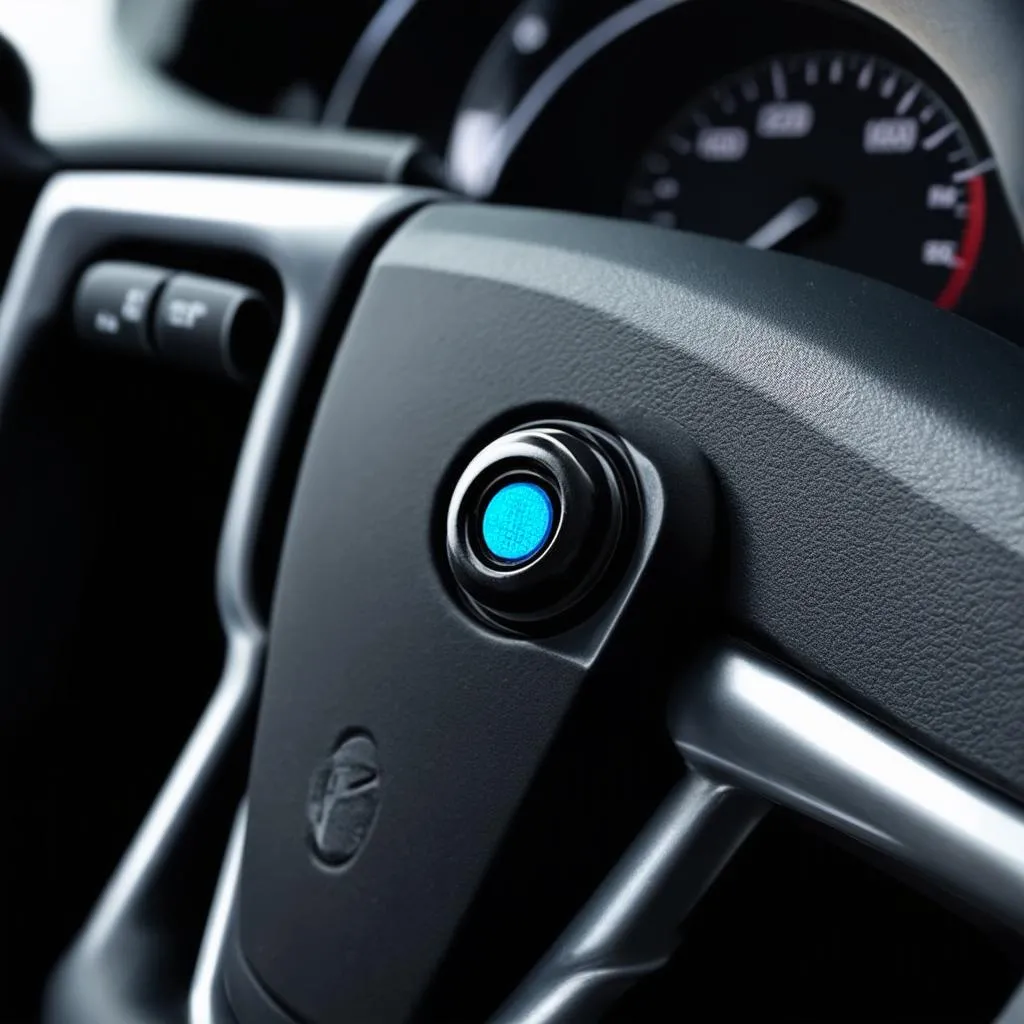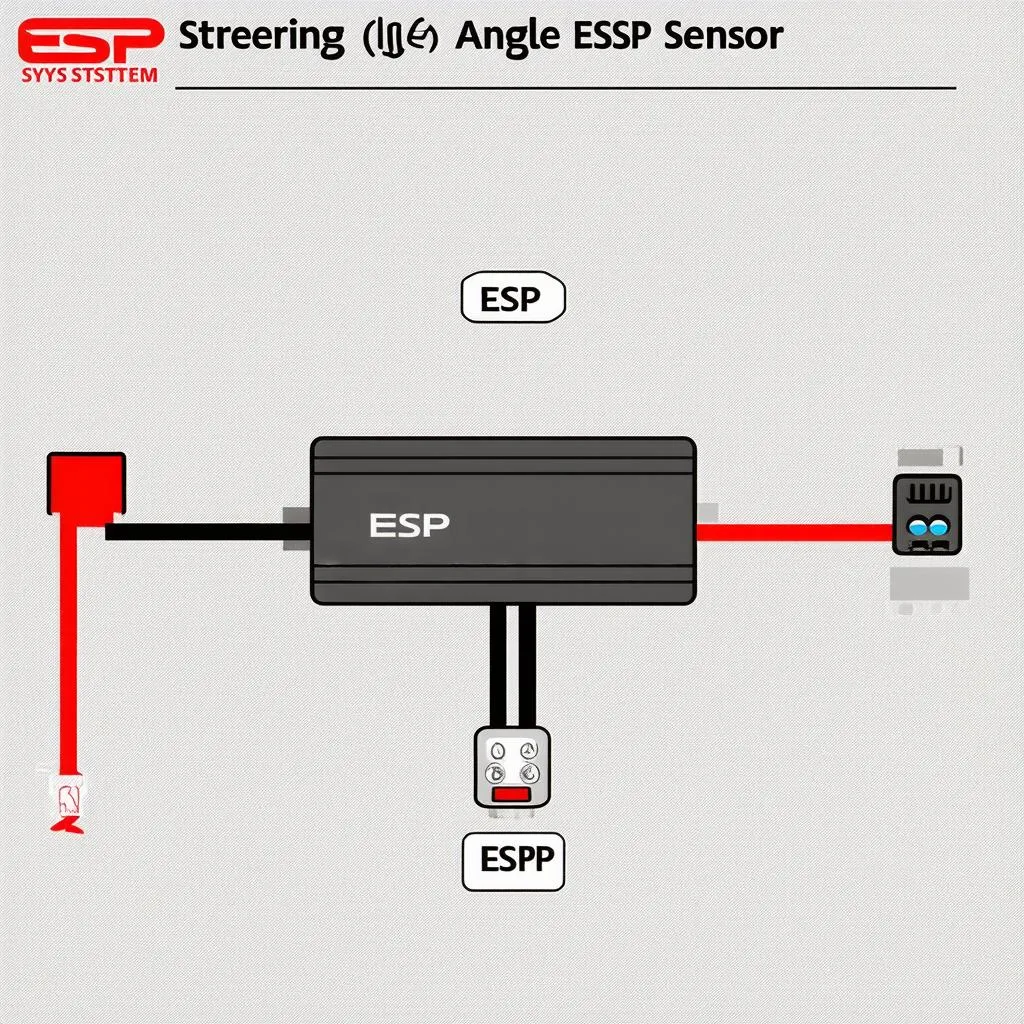VCDS Steering Adaptation EOS: A Comprehensive Guide for Enthusiasts and Professionals
Have you ever wondered how to calibrate your car’s steering wheel after making modifications or repairs? If you’re a DIY enthusiast or a professional mechanic working on a European vehicle equipped with an Electronic Stability Program (ESP) and a steering angle sensor, you’ve likely encountered the term “Vcds Steering Adaptation Eos.” But what exactly does it mean and why is it crucial for optimal vehicle performance? Join us on this journey as we explore the world of steering adaptation and unravel the secrets behind this often-intimidating process.
Understanding Steering Adaptation and its Significance
The Essence of Steering Adaptation
Imagine a delicate dance between your steering wheel and the car’s response. Steering adaptation is like fine-tuning this intricate ballet, ensuring that every turn of the wheel translates smoothly into the car’s intended direction. It’s a crucial process for maintaining accurate steering feedback, responsive handling, and a safe driving experience.
Why is Steering Adaptation Necessary?
Steering adaptation becomes essential when:
- Replacing Steering Components: Any alteration to your steering system, such as replacing a steering angle sensor, steering rack, or tie rods, requires recalibrating the steering angle sensor to ensure it aligns with the vehicle’s actual steering position.
- Modifying Steering Geometry: When adjusting alignment settings or installing performance upgrades, a steering adaptation is needed to re-establish the precise relationship between the steering angle sensor and the vehicle’s movement.
- ESP System Errors: If your ESP system throws errors related to steering angle, steering adaptation can often resolve the issue by recalibrating the sensor.
The Role of VCDS: Your Digital Key to Steering Adaptation
VCDS: A Powerful Diagnostic Tool
VCDS, short for “VAG-COM Diagnostic System,” is a widely recognized and versatile diagnostic tool for Volkswagen, Audi, Skoda, and Seat vehicles. Think of it as a digital key that unlocks the secrets of your car’s electronics, granting you access to a vast array of information and control functions.
VCDS and Steering Adaptation: A Perfect Match
VCDS offers a dedicated module for performing steering adaptation, allowing you to:
- Calibrate the Steering Angle Sensor: VCDS provides a guided procedure for recalibrating the sensor, ensuring it aligns accurately with the vehicle’s steering position.
- Clear Fault Codes: Any error codes related to steering angle can be cleared through VCDS, eliminating potential issues and restoring proper functionality.
- Access Advanced Functions: VCDS empowers you to delve deeper into the vehicle’s control systems, allowing you to make adjustments beyond basic steering adaptation.
Executing Steering Adaptation Using VCDS: A Step-by-Step Guide
Please note: This guide is for informational purposes only. Consult your owner’s manual or a qualified mechanic for detailed instructions specific to your vehicle.
- Connect VCDS: Connect your VCDS device to your car’s OBD-II port and ensure a stable connection.
- Select Vehicle: Choose your vehicle model and year from the VCDS software.
- Navigate to Steering Angle Sensor: Locate the steering angle sensor module within the VCDS interface.
- Perform Adaptation: Follow the on-screen prompts for steering angle sensor adaptation.
- Complete the Procedure: Allow the adaptation process to complete without interruption.
Steering Adaptation: Tips, Tricks, and Common Pitfalls
Common Scenarios:
- Steering Wheel Offset: After a steering angle sensor replacement, the steering wheel might be slightly off-center. Steering adaptation typically resolves this issue.
- ESP System Malfunction: A steering angle sensor error can trigger ESP warnings. Steering adaptation can often rectify the problem.
Important Considerations:
- Vehicle Specific Instructions: Always refer to the specific instructions provided in your vehicle’s owner’s manual or consult a professional mechanic.
- Professional Assistance: If you’re unsure about performing steering adaptation, it’s best to seek guidance from a certified mechanic.
Steering Adaptation: Connecting the Dots
The Automotive Universe:
Steering adaptation is an integral part of modern automotive technology. It underscores the interconnectedness of various systems within your car, from the steering angle sensor to the ESP system and beyond.
A Holistic Perspective:
Think of your car as a microcosm of the universe – a complex system governed by intricate relationships and delicate balances. Steering adaptation is a way to restore harmony within this intricate ecosystem, ensuring your vehicle operates smoothly and safely.
Finding Balance:
Just as feng shui principles seek to harmonize energy flow in a space, steering adaptation strives to achieve balance within the vehicle’s steering system. When this balance is restored, you’ll experience a smoother, more responsive driving experience.
FAQs:
- Can I perform steering adaptation on any European car with VCDS? While VCDS is compatible with a wide range of Volkswagen, Audi, Skoda, and Seat models, specific procedures may vary.
- What happens if I don’t perform steering adaptation after replacing a steering angle sensor? You may experience inaccurate steering feedback, ESP warnings, and even safety risks.
- Is it possible to perform steering adaptation on my own? With the right information and caution, it’s possible to perform basic adaptation using VCDS. However, seeking professional assistance is recommended if you’re unsure.
Explore Further:
- Learn More about VCDS: Discover the vast capabilities of this diagnostic tool and how it can enhance your understanding of your vehicle. [Link: https://cardiagxpert.com/audi-a4-b6-vcds-codes/]
- VCDS Lite: A Beginner’s Guide: Explore the basics of VCDS and its applications for basic diagnostics. [Link: https://cardiagxpert.com/vcds-tdi-ip-with-vcds-lite-generic/]
Take Action Today!
Ready to take control of your car’s steering system? Need assistance with VCDS installation or support? Reach out to us via Whatsapp at +84767531508. Our expert team of automotive technicians is available 24/7 to guide you through the process.
Conclusion
Steering adaptation is a crucial process for ensuring accurate steering feedback, responsive handling, and a safe driving experience. VCDS provides a powerful and user-friendly solution for performing this critical task, empowering you to maintain optimal vehicle performance.
Remember, understanding your car’s intricate workings and embracing preventive maintenance can lead to a harmonious and fulfilling relationship with your vehicle.
Share your experiences with steering adaptation and leave a comment below! Let’s continue to learn and grow together.
 VCDS Steering Adaptation on European Cars
VCDS Steering Adaptation on European Cars
 Steering Angle Sensor
Steering Angle Sensor
 Electronic Stability Program System
Electronic Stability Program System
